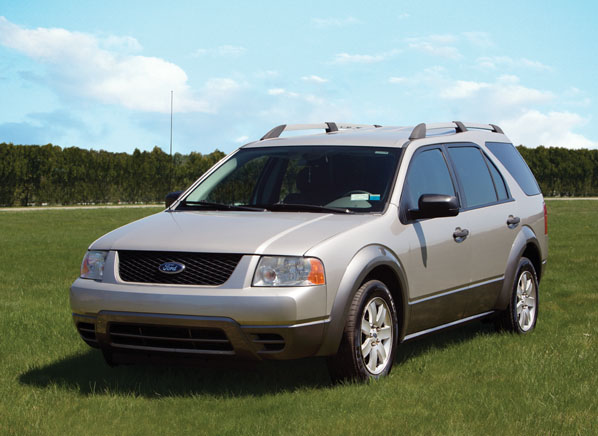Can a major cleaning boost the value of your car? To answer that question, we put out a call to find the dirtiest car in our company parking lot. The 2006 Ford Freestyle (above) won the prize; the outside didn’t look too bad, but the inside made us gag. We had it appraised at a dealership, which valued it $2,500. Then the Freestyle—owned by a mom with two messy teens—got a $300 professional detailing. The former trash-can-on-wheels sparkled, though the pro couldn’t get out all of the stains. The value of the car also didn’t budge after the cleaning, according to a second appraisal we got at another dealership.
That surprised us. But dealers tell us that they can see right through a last-minute cleanup, even if it’s done by a professional detailer. They say they’re more concerned with a car’s overall condition and how well it’s been cared for over time. So regular cleaning and consistent maintenance are the key to getting top dollar. Other factors that affect price include regional supply and demand, time of year, and color.
That said, a thorough cleaning may help your car stand out if you’re selling it privately. Here’s how to save big and get professional results doing it yourself. Ken Saviet, a detailer in Mendham, N.J., who specializes in shining up high-end and collector cars, helped us with these tips. (Watch the videos at the bottom of this page for more on keeping your car clean.)
Clear the cup holders (above). These are probably the dirtiest spots in your car. To clean them fast, put an old sock over the bottom of a travel cup, spray it with window cleaner, and twist. Then get into the corners with a wooden barbecue skewer and pick out any remaining crud; remove it with a microfiber cloth. To make cup holders easier to clean, invest in rubber liners that you can take out and rinse. You can buy them at dealerships, car washes, and auto-parts stores for as little as $6.
Blast out crevice dirt (below). Poke around a car’s nooks and crannies, and you’ll probably find pens, change, keys, mud, and other odds and ends. After grabbing the big stuff with your hands, use a barbecue skewer to pick out the debris wedged between sill lips and carpeting. Then vacuum the area using the cleaner’s crevice tool (the attachment that’s flat at the end). Finish off the area with glass cleaner and a microfiber cloth.
Get into corners. You don’t need special tools to clean out tight interior areas. Wood skewers and cotton swabs are great for small spots such as vents, seams, buttons, and switches. Old makeup brushes also work well in louvers and vents.
Deep-clean fabrics. Spray vacuumed carpets (and cloth seats if you have them) lightly with a foaming aerosol cleaner. After it begins to dry, use a vacuum to remove it. For an even deeper cleaning, rent a carpet extractor from a home center or grocery store.
Be gentle with plastics. Use an ammonia-free glass cleaner on plastic surfaces. (Ammonia may cause surfaces to bleach.)
Do a final vacuuming. A second go-over picks up any dirt that was dislodged during the cleaning.
Don’t wash in direct sunlight. That will help prevent any possible damage if the paint gets too hot when you’re washing and waxing. (Cloudy days are fine, too.) Also, start at the top and work your way down using a lamb’s wool mitt, gentle soap, and water. Lower surfaces are the grimiest, and dirt can end up lodged in your mitt, causing scratches.
Grab a clay bar. After you’ve dried your car with a chamois cloth, gently pull a clay bar (see the next page for details) across the body panels to pull up leftover dirt. They’re also great for getting windows squeaky clean.
Make rims sparkle (above). Your car’s wheels get covered with brake dust, tar, and road grime that’s very hard to remove. To make them shine, look for a wheel cleaner that’s labeled as safe for all surfaces, and avoid caustic cleaners that can harm a factory wheel’s finish (the warning labels alone made us dizzy!). Though dish soap is too harsh, other nonabrasive cleaning products work well enough. Scrub it in with a sponge and a soft-bristled toothbrush in tight areas, then rinse with water. Check for missed spots and go over them.
Give it a rest. Exterior cleaners, especially those for wheels and tires, stay wet for a while, and that can attract dirt when you drive. Wait until everything is dry before getting on the road.

How to detail your car and give it a makeover!
by
Tags:

Leave a Reply